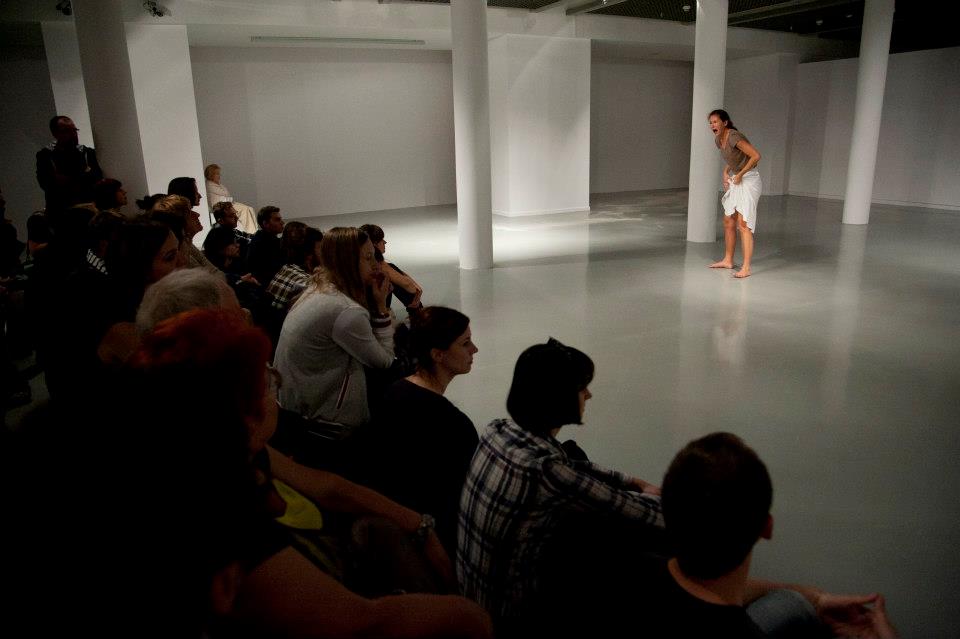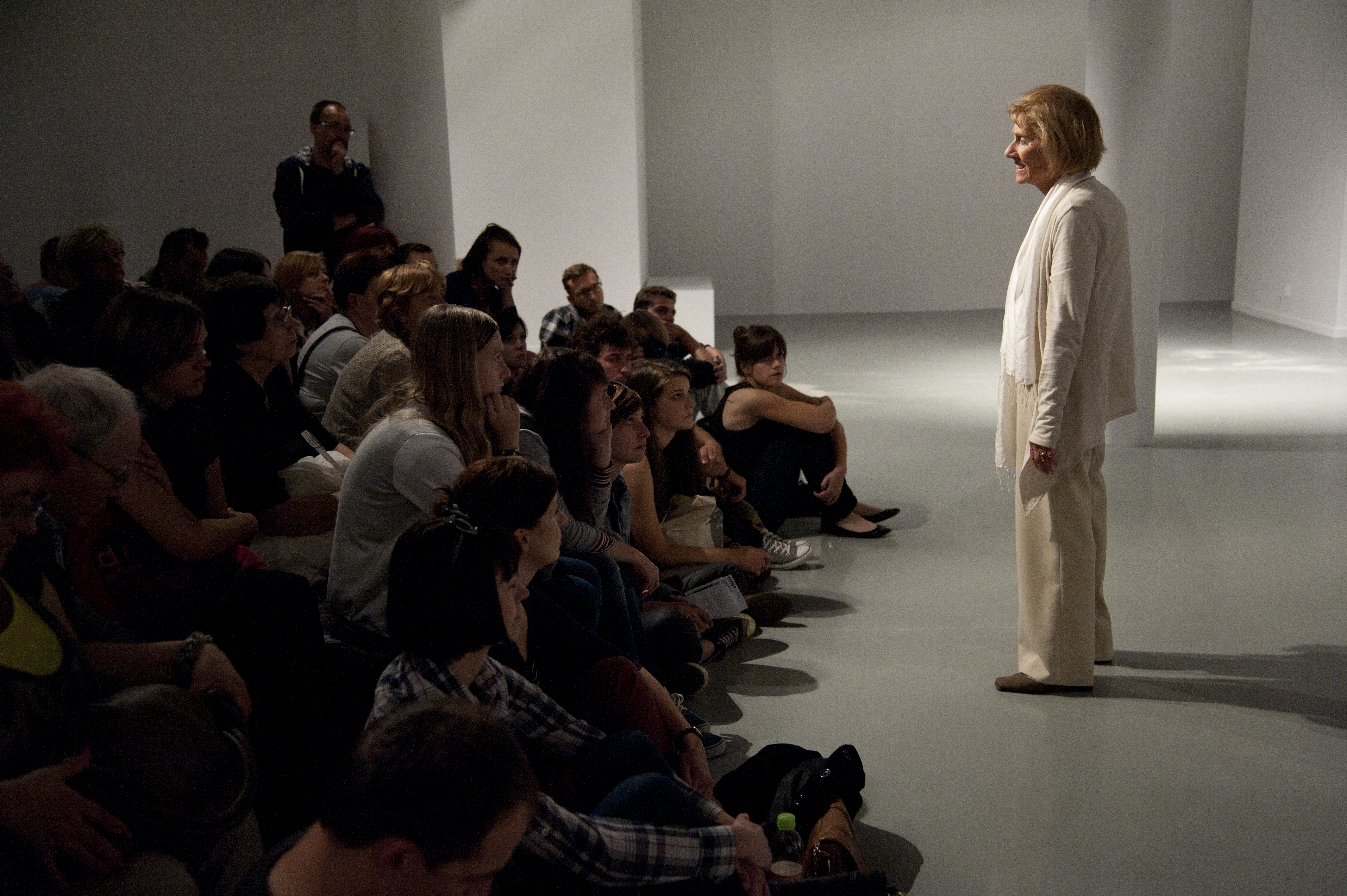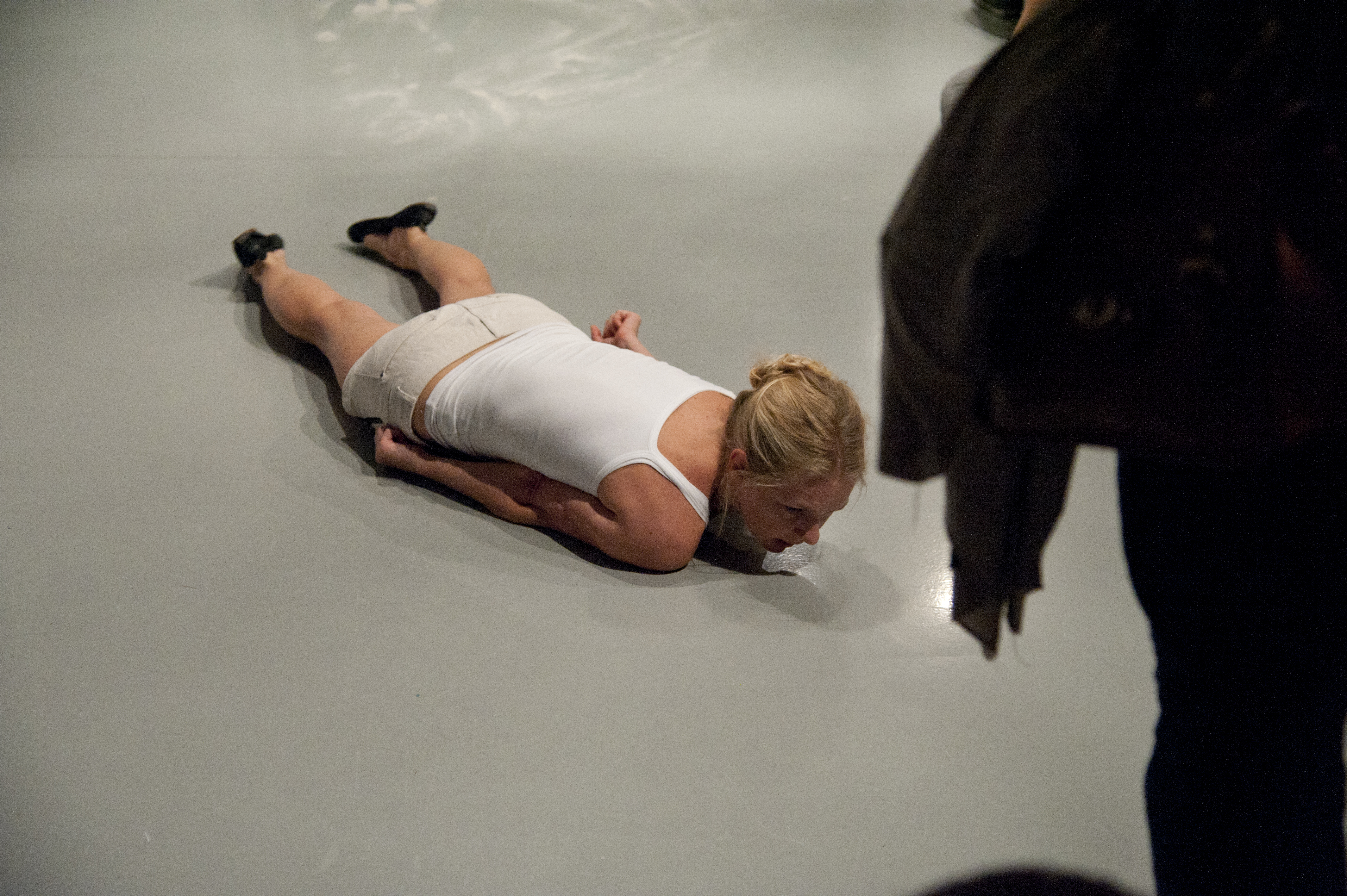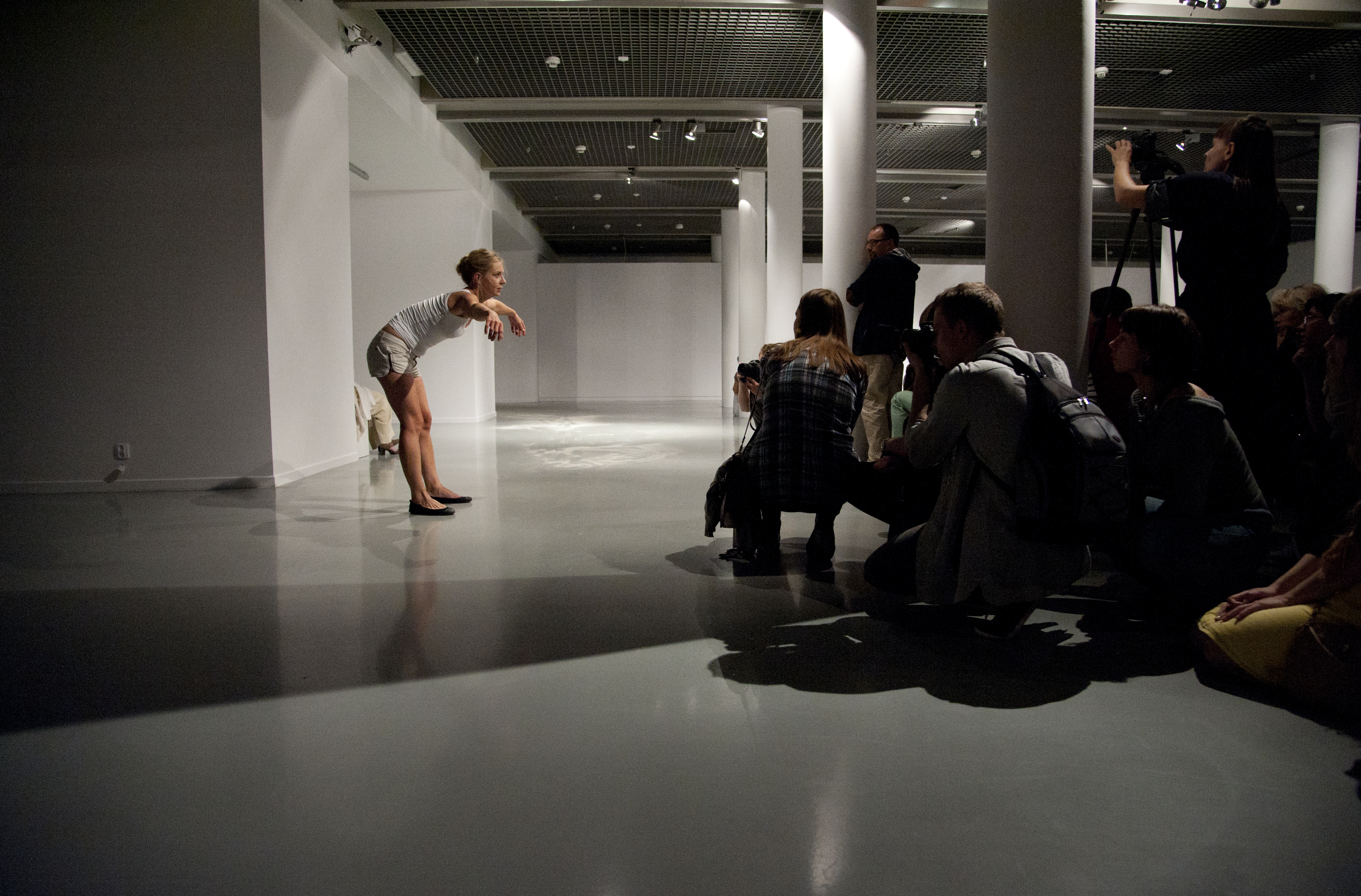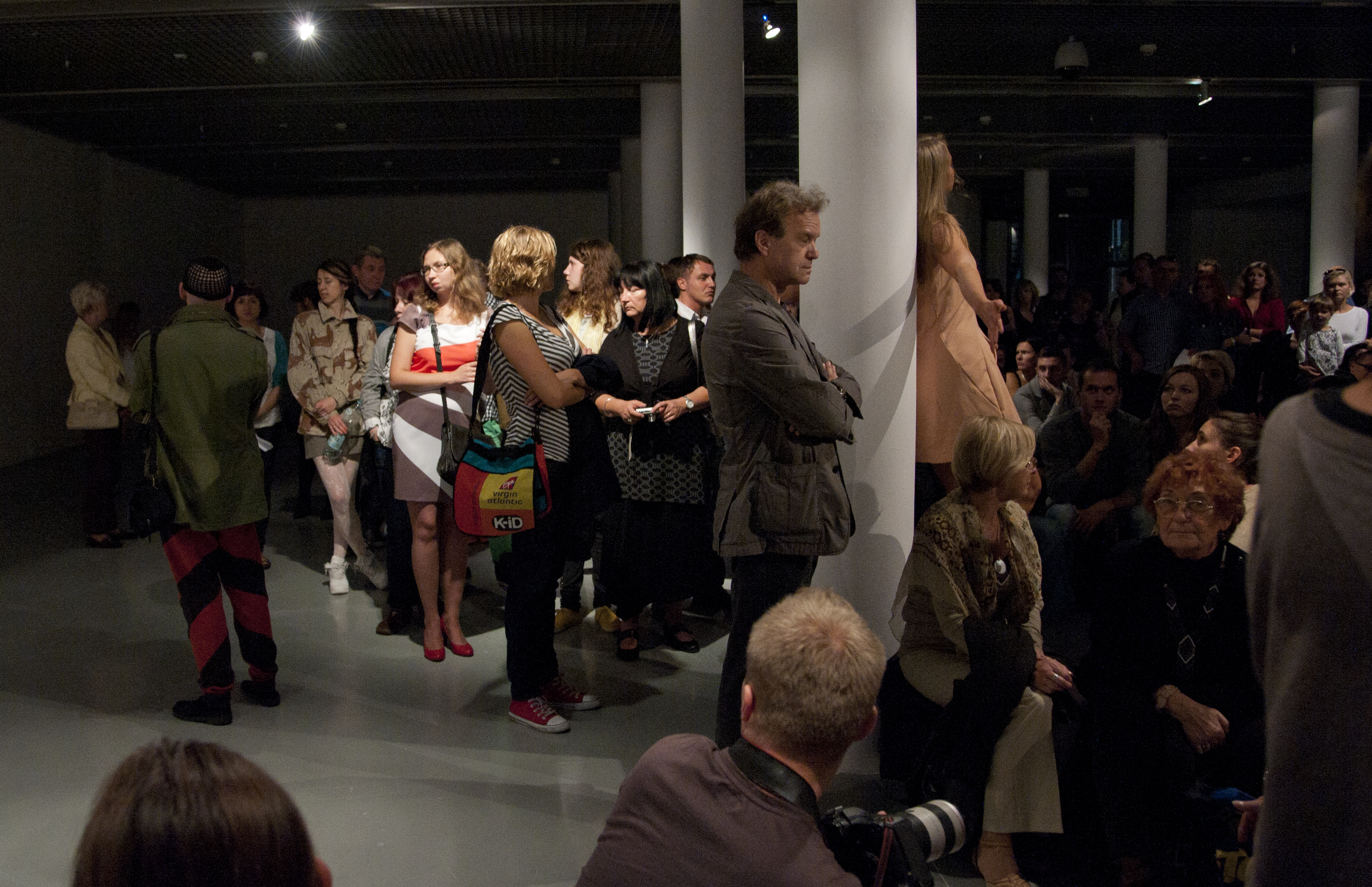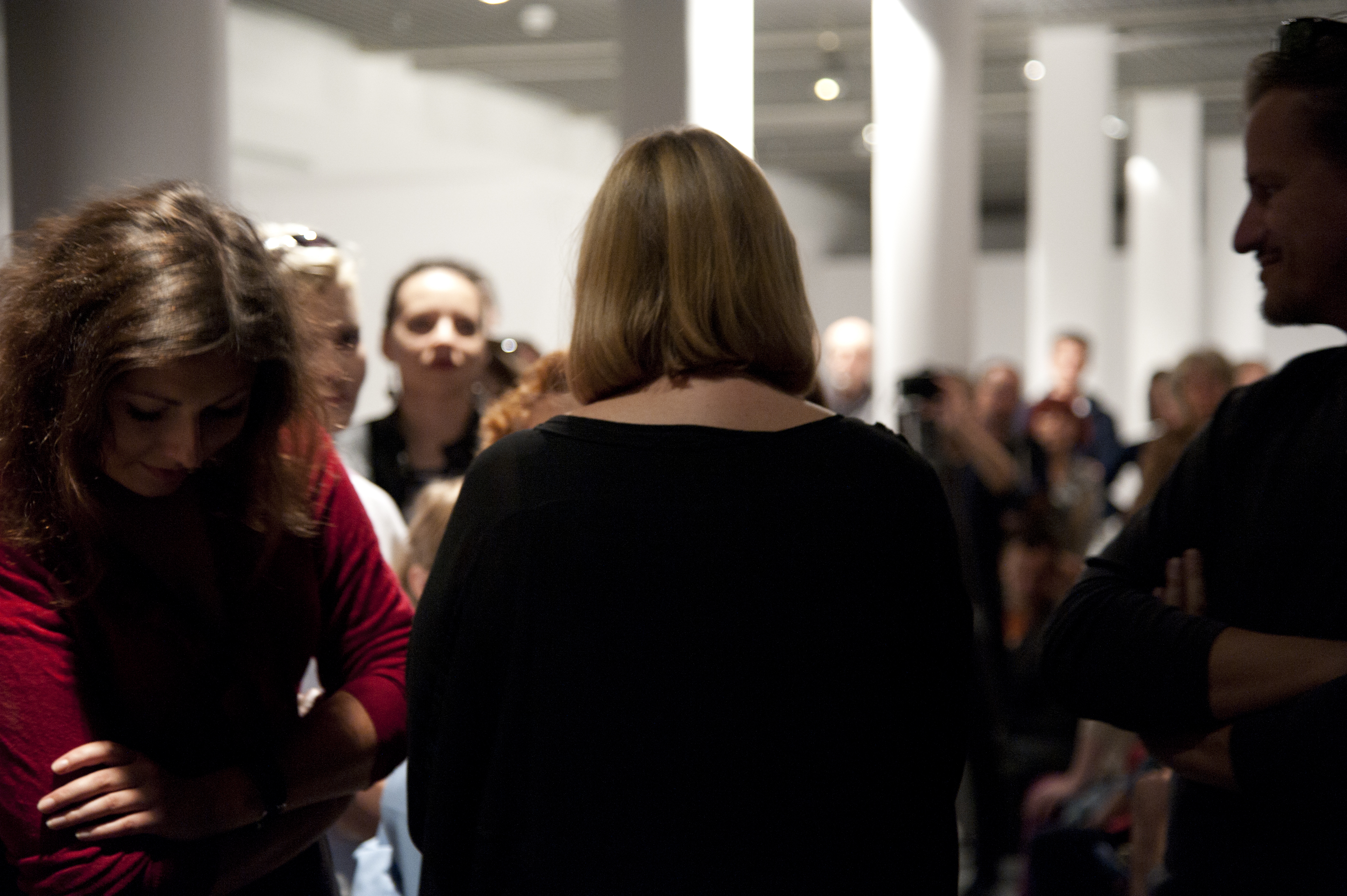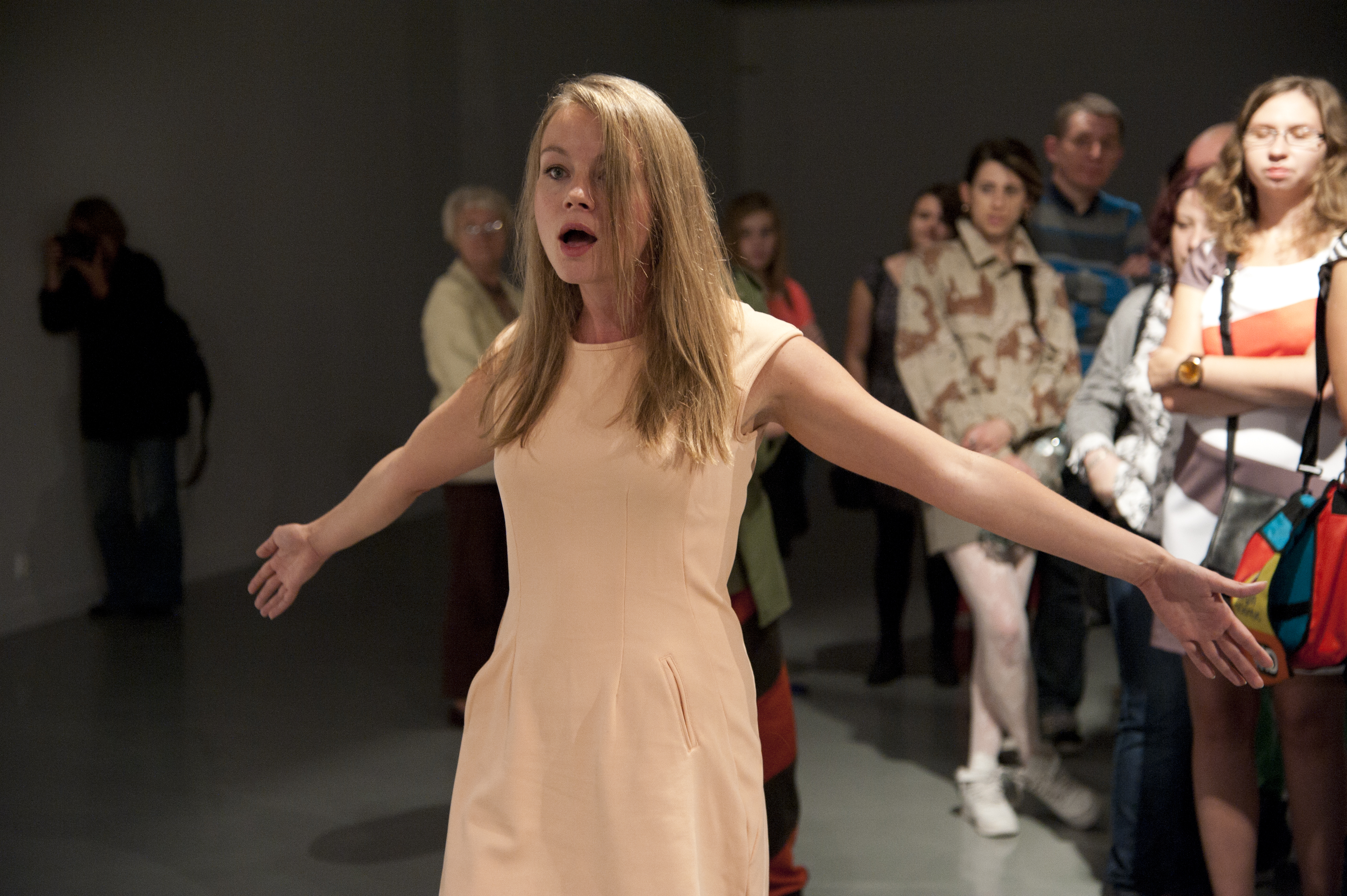Ewa Majewska
What Does She Still Want? Ophelia’s Madness as a Structural Transformation of the Public Sphere
The text concentrates on the consequences of Ophelia’s entrance into the public sphere. What kind of counterpublics does women’s madness generate, how does it influence the articulation of political postulates, how does it transform the structures of the public sphere, and what divisions in the public sphere does it challenge? I would like to examine not only the elements of the existing public sphere structures that Ophelia’s agency seemingly tears apart, but also those that her activity—and the activity of the women who follow her—integrates in an indirect or direct way.
After becoming a Category 2 hurricane and fluctuating in intensity for a day, Ophelia intensified into a major hurricane on 14 October south of the Azores, brushing the archipelago with high winds and heavy rainfall. Shortly after achieving peak intensity, Ophelia began weakening as it accelerated over progressively colder waters to its northeast towards Ireland and Great Britain.
Wikipedia, EN.
I am always amazed by it. Encore! (…) What has favoured me for some time is that there is apparently also on your part, in the great mass of you, who are here, the same
I don’t want to know anything about it. (…) I am leaving you then on this bed, to your own inspiration.
Lacan, Seminaire XX
The Young-Girl is crazy about the authentic because it’s a lie.
Tiqqun, Raw Materials for a theory of a young girl.
In her study Gender Trouble, a seminal publication in the field of research on the social and cultural shaping of gender, Judith Butler devotes considerable attention to the symbolic and physical violence with which the patriarchal heteronormative society reacts to the people who transgress the binary codes of sex and sexual orientation.[1] I have always been tempted to verify how that works with regard to women. What happens to a woman when she attempts to enter the public space? What does women’s presence in the public space look like? What happens to women who attempt to participate in the public debate?
The mechanisms of patriarchal reaction to women – particularly when women bring into the public sphere the issues of our exclusion, our suffering, and our systematic, if not systemic, non-admission and limitation in virtually all spheres of life – are hideous. Ridiculing and degrading women, double standards, glass ceilings and sticky floors, uninvited hands roaming our bodies when we are girls, when we are teenagers, when we are adults; at bars, at interviews, in religion lessons, on buses, at schools and at universities; at surgeries and dispensaries, in classes and therapies – it happens to us everywhere. Recently repeated in the social media, the action #metoo, during which millions of women publicly shared their experience of sexual harassment and violence, revealed not only the dimensions and ubiquity of such behaviour against women, but also the dynamics of the responses that many men and few women were instantly ready to formulate in order to break those women, to push back that avalanche, if only unofficial, of women’s complaints about transgressing and shifting our borders, about treating us and our bodies as a resource rather than as autonomous individuals, about pain.
As we enter Zorka Wollny’s heavily theatrical performance in which we are surrounded by actresses of different ages playing the roles of Ophelia, we find ourselves at the centre of women’s distress, women’s pain and women’s madness. As we participate in this action based on a multiplicity of voices of insane women, we hear splinters of wounded love discourse tossed around, which we know will become a shroud for an abandoned girl who throws herself into the water. The clash between performance – a free spontaneous action generated by human bodies at a museum or gallery – with a theatrical format complete with a script (a classic one!), acting methods, direction, dramaturgy and stage design, intensifies the already paralysing women’s madness. There is not just one Ophelia, but several of them – women of different ages, whose acting follows several different conventions, sometimes interacting with the audience and amongst its members, while at other times staying at a consciously kept distance. The actresses articulate, and even invite the viewers to articulate, or otherwise they take a swing and discourage any attempts even at intellectual proximity; they sometimes look like models in photographs from the Salpêtrière clinic, and sometimes – like ordinary women, like you and me. They are everywhere. They are walking, sitting, standing, bending their bodies, making a gymnastic bridge, animating, withdrawing… howling, whispering and screaming, sometimes uttering words, while at other times simply letting out some terrible noises.
The gesture of throwing oneself into the water, an element of self-destructive madness, has always been associated with distress caused by a heartbreak or depression and recognised as “typically female”, in line with the cultural norm of the “weaker sex.” But are we not distressed also by inaccessibility demonstrated by institutions and other structures of public life? Is it really that, as Habermas wrote in his encyclopaedia entry, access to the public sphere “is guaranteed to all citizens”?[2] Does being in the public sphere really mean the same for everyone? Are there people for whom entering the public sphere entails a sanction rather than results from a conscious choice? Does the public sphere have its personae non grata? Does it have its outcasts or public enemies?
I have the impression that the answer to all the above questions is “yes.” For the leaders of the African-American civil rights movement and for some leftist activists their entrance to the public sphere brought about sanctions – Martin Luther King Jr, Malcom X, Rosa Luxemburg and many similar figures lost their lives because they went out of the shadow or the underground and publicly voiced their political postulates. In turn, people such as homosexual men who were detained or invigilated within the Operation Hyacinth in Poland became part of the public debate often against their own will, akin to HIV-positive individuals in the 1980s and 1990s[3]. The women who attempted to become artists, writers or politicians often paid an exorbitant price for their pursuits, for instance, Camille Claudel, Virginia Woolf, Olga Boznańska, and Katarzyna Kobro… In this case, women’s madness can be seen as transversal, as something that cuts across the networks of social relations according to the premises adopted by Felix Guattari in The Three Ecologies.[4] Without attempting to directly attack the specific elements of social structure or completely abolish the opposition, it operates on the materialised, lived-through, embodied tissue of human experience, organised by binary divisions, reshaping them from the level of practice and gradually yet irrevocably re-writing the codes and scripts of behaviour in order to ultimately leave nothing as it was before. In order to understand how such a structural re-arrangement of the public sphere operates and why it is transversal, we need to imagine that somewhere in the depths of rivers and cellars such seemingly divergent figures as Antigone and Ophelia or Rosa Luxemburg and Virginia Woolf shake hands and decide to speak in unison. Zorka Wollny’s activity with the Ophelias involves such a transversal movement – they are everywhere and transform everything: our perspective on theatre and performance, our imagination of what is acceptable and what is not; our thinking about women and their presence in the public space, our understanding or conjecture about Feminism… everything suddenly becomes present in a slightly disturbing but also fascinating way, everything becomes additionally amplified by the canon and the struggle with it, by the internal conflict waged in the sphere of ethicality between the singular, the experienced, the visceral and the established theatrical and social norm.
Our culture does not usually witness transgressions of rigid rules of womanhood that is valiant and submissive, political and literary. This absence is pointed out by the author of Antigone Interrupted, Bonnie Honig, whose moving reconstruction of the Sophocles’ tragedy draws attention to the hitherto unnoticed alliance between Ismene and Antigone – figures whom most critics consider apart. According to Honig, they act in conspiracy and “one would not move forward without the other.”[5] Such a dramatic reversal actually seems impossible in Hamlet – Ophelia is alone there, surrounded by politics and men’s world as well as her half-conscious loved one with a fragile male ego, incapable, of course, of going beyond predictable liberal individualism, because his role is to act out the drama of the modern “self” nascent amongst monarchies and plantations. The role of Ophelia – a conscious and poetic girl, but also a hostage of her own gender role, a femininity that is fragile and vulnerable – is to act out madness; she is a perfect supporting character, who only ever amplifies the affective turmoil experienced by the protagonist. She is his shadow and an unknown (and never known) embodiment of mad passion otherwise limited to the intellect, a supplement whose sensuality and body tossing itself around the stage complements the intellectual-political landscape of power that forms amongst cruelty and violence. Marx wrote in Capital that “the history of their expropriation is written in the annals of mankind in letters of blood and fire.”[6] Expropriation of two young people from life as a result of exclusion, repression and the pressure of affect in patriarchal culture seems equally painful.
In confrontation with Antigone, Creon accuses her of imposing on the state and civilisation a disorder that is characteristic of women. These words, copied almost literally from Rousseau, are analysed from a Feminist perspective by Carole Pateman, who rightly emphasizes the depth of male fear of confusion, transgression and affect.[7] Pateman is one of those authors who lay bare with extreme dynamism and precision the division – problematic from women’s perspective – into the private and the public, which lies at the core of liberal and conservative political theory. For this reason, her Feminist analysis of the “fraternal contract” – which underpins liberal democracies and consists in re-enacting the king’s authoritarian power although not over his sons, as it was under absolutism, but over women – is interwoven with the Socialist critiques of liberal democracy that highlight the exclusion of those involved in production – the workers – from its rights and political institutions. I find this analogy – between affect and production, workers and women – productive also in discussions pursued in the field of aesthetics, including the debates on “Hamlet,” “Ophelias,” etc.
Such a discussion also presupposes a certain potentially non-individualistic horizon, a possibility to perceive humans in a relational and contextual manner – without separation. It presupposes Ophelia’s exit from isolation and invisibility as well as an invasion – committed by herself, her experiences, her words, the world of her mind and her madness – of the structure of existing culture. It seems to me that this is exactly what Zorka Wollny manages to achieve – in the work Ophelias. Iconography of Madness we observe not only hysterics liberated from the context of the tragedy in the Danish kingdom, but also, more broadly, we examine the meaning of their appearance in our world – intensified, multiplied and staged. The spectacular seriality of Wollny’s Ophelias, their multiplication by age, by dramaturgies, costumes, strategies of acting and interaction with the audience, turn the spectacle into an attempt to bring the figure of the young girl closer to the contemporary audience. All girlish ways of having fun, fears, idioms are acted out a number of times, in various styles and by different people. This brings to mind the already classic manifesto The Laugh of the Medusa by Hélène Cixous, in which everything that is female is portrayed as repressed by the male-dominated culture, yet it nevertheless claims access to culture. It is similar with Ophelia and every young girl who tries to find a place for herself in a culture that is not built for her and does not correspond to her way of living in the world and experiencing it. Cixous wrote: “Beauty will no longer be forbidden. I wished that that woman would write and proclaim this unique empire so that other women, other unacknowledged sovereigns, might exclaim: I, too, overflow; my desires have invented new desires, my body knows unheard-of songs. Time and again I, too, have felt so full of luminous torrents that I could burst – burst with forms much more beautiful than those which are put up in frames and sold for a stinking fortune. And I, too, said nothing, showed nothing; I didn’t open my mouth, I didn’t repaint my half of the world. I was ashamed. I was afraid, and I swallowed my shame and my fear. I said to myself: You are mad! What’s the meaning of these waves, these floods, these outbursts?”[8] This is how Ophelia would likely have spoken if she had had the possibility and ability to speak, if her jump into the depths had somehow been prevented. We may attempt to read Ophelia with the tools proposed by Gayatri Spivak – as a “subaltern” deprived of voice in the patriarchal culture, as a person whose voice is always already entangled in colonial shifts – in a catachresis that regulates her exceptionality through the demands of the valid perception of “people like her” by the dominant groups.[9] We also situate and contextualise Ophelia depending on the circumstances – as rejected, mad, hysterical. Elaine Showalter underlines that this indeed happens extremely often: “Though she is neglected in criticism, Ophelia is probably the most frequently illustrated and cited of Shakespeare’s heroines.”[10] Concentrating on the question of Ophelia’s representation, Showalter somehow pacifies her agency , although she intentionally performs a Feminist reading. By strictly separating the experience of contemporary women from the figure, character or role of Ophelia, she effectively stabilises her in the role of an object of exclusion, which is exactly the opposite of what Zorka Wollny does by not only bringing Ophelia to life and extracting her from the context of Shakespeare’s play, but also by multiplying and enriching her. Showalter quotes an interesting story of one of the historic actresses who played that role: “The greatest triumph was reserved for Susan Mountfort, a former actress at Lincoln’s Inn Fields who had gone mad after her lover’s betrayal. One night in 1720 she escaped from her keeper, rushed to the theatre, and just as the Ophelia of the evening was to enter for her mad scene, ‘sprang forward in her place… with wild eyes and wavering motion.’ As a contemporary reported, ‘she was in truth Ophelia herself, to the amazement of the performers as well as of the audience – nature having made this last effort, her vital powers failed her and she died soon after.’”[11] This story seems to be mentioned en passant, as if it was a warning, although it seems to anticipate in a certain way the work by Zorka Wollny – albeit without an existential tragedy and “real” madness, but perhaps on the border of madness. Yet, in Showalter’s analysis, Ophelia is frozen in her impossibility, exclusion and helplessness. She is discussed like an artefact at a museum of representation – bygone, absent and, in a certain sense, impossible. But what indeed makes the figure of Ophelia so terribly moving, especially for contemporary women, are the elements of her madness and distress that form parts of our own experience of patriarchal culture. For this very reason, it is not only through historical or directing precision – as much as it also characterises Zorka Wollny’s work – that her “presentation” of Ophelia can turn into a tool of political representation.
Artnowadays largely consists in working with the audience. After years of didactically and critically overburdened pieces addressed to the audience, contemporary art is seeking formats that are engaging with the audience, but are at the same time free from self-imposing pedagogy. Such needs were pertinently formulated by Jacques Rancière, whose book The Emancipated Spectator drew attention to the fact that today’s audience consists of well-educated people who have all the necessary competence to participate in artistic events, therefore they do not need to have anything explained or pointed out.[12] According to Rancière, the fatigue caused by critical art, which preaches at us, should lead to art that gives us space, indicates the boundary conditions and offers suggestions, but not strict guidelines, encourages thinking and experiencing, instead of directly pointing out the current wrongs. It seems to me that Zorka Wollny has managed to achieve this very goal in her extremely carefully prepared confrontation between performance and a theatre spectacle – for some of us this new “division of the perceptible” will primarily become a discussion about the formats of the message conveyed by art, for others – a history of madness in the era of neoliberalism, and for others still – a new form of articulating women’s “ problem without name.”
All those things are to be found in Ophelias. Iconography of Madness, which is why I have chosen to write about “Ophelic counterpublics.” According to the narrative by Alexander Kluge and Oskar Negt, who in 1972 responded critically to Habermas’ monumental work about the public sphere published ten years earlier, counterpublics are the spaces of generating public debate and political agency that is critical of the authorities; they do not abandon the problematic of production but situate it at the heart of their theory. As opposed to Habermas’ bourgeois public sphere, counterpublics are proletarian and they problematise the lived experience of producers – here: workers. In a much later text, the topic of counterpublics was addressed again by the Feminist philosopher Nancy Fraser, who proposed the category of “subaltern counterpublics” and thus also introduced a Feminist counterpublic as an example of a public that escapes the limitations of Habermas’ concept.[13] The Feminist counterpublics move across the division into the public and private sphere, which is of key importance to Habermas and, more generally, to liberal democracies; it is inclusive, heterogeneous and it is legion. Exactly like the Ophelias in Zorka Wollny’s work, the Feminist counterpublics operate in various registers and intervene in various elements of patriarchal culture. They diagnose its exclusions and marginalisations, articulate violence and madness… while their interaction with the audience generates a frame for a broad debate about the (non-)presence of women in culture and politics, thus opening up critical possibilities.
Ophelia is a figure of loss – loss of balance, security, life. She is a weak and volatile figure, but also one that can be seen as banal and repetitive, which makes her familiar in a certain way, although she indeed remains alien to the requirements of the self-reliant, rational, individual subject that allegedly provides the sole model of political agency. Howling, throwing flowers about or giving out inarticulate whispers, Ophelia is a foreign body in the landscape of liberal democracy, and not a subject with agency. In order to be able to talk about her at all, one needs to challenge the entire paradigm, as it was done by Linda Nochlin, who dismantled the very premises of the question: why have there been no great women artists?[14] One needs to ask: who is the system of political representation designed for? How does it accommodate people from outside dominant groups and what mechanisms of domination are imposed on them almost immediately when they attempt to make their voice heard in this system?
As we observe the actions of the Ophelias staged by Zorka Wollny, we follow not only the workings of the system of artistic presentation, but we also experience the problems and limitations of political representation; we find in ourselves and in others all those abandoned, ridiculed, isolated and distressed women for whom the experience of confrontation with social gender norms is akin to a clash with an adversary that they cannot combat. The Ophelias invite us to experience exclusion, rejection and dissent with them. As we look at them, we may begin the performance of our own affective memory, in which our own experience of trauma or rejection will be acted out, but also perhaps worked through. Looking at the Ophelias, we are a bit similar to Chloe looking at Olivia in Virginia Woolf’s A Room of One’s Own: we like her. And then we realise how seldom we look at women in an unmediated way in the realm of a male-centric culture.
Dr Ewa Majewska is a feminist philosopher of culture. She was a visiting fellow at the University of California, Berkeley (BBRG), a stipendiary fellow at the University of Orebro (Sweden), IWM (Vienna) and ICI Berlin, she works as adiunkt professor at the Department of Artes Liberales at the University of Warsaw, Poland. She is the author of three monographs, co-editor of four volumes on neoliberalism, politics, gender and education; she published articles and essays in: Signs, e-flux, Nowa Krytyka, Przegląd Filozoficzny, Przegląd Kulturoznawczy, Kultura Współczesna, Le Monde Diplomatique (PL) and multiple collected volumes. Her main focus is weak resistance, counterpublics and critical affect studies.
